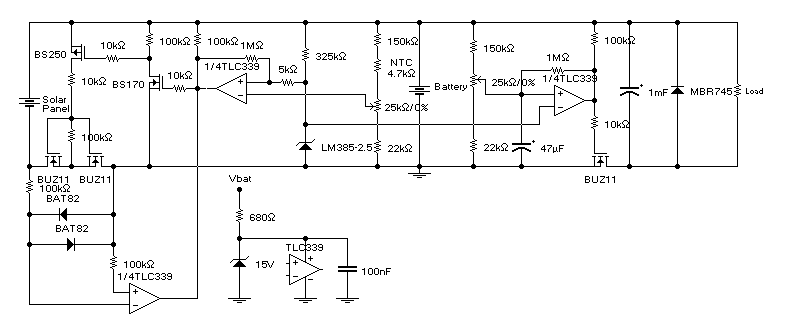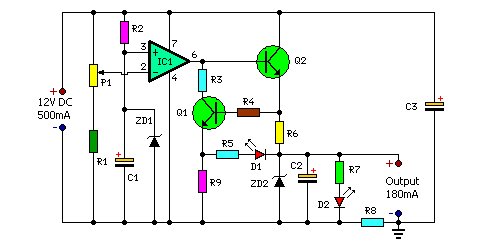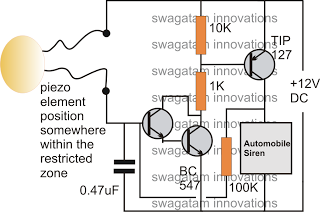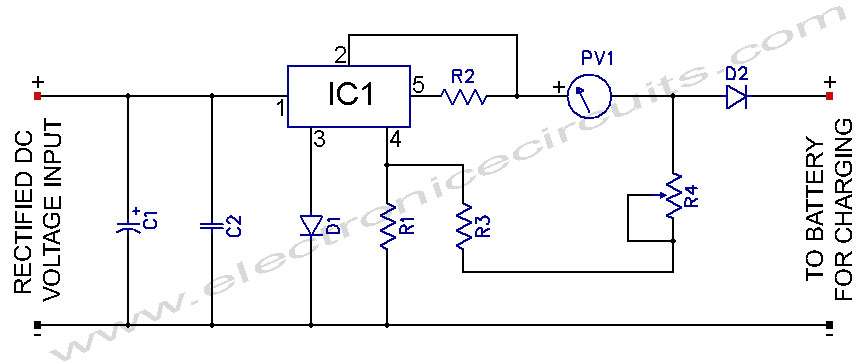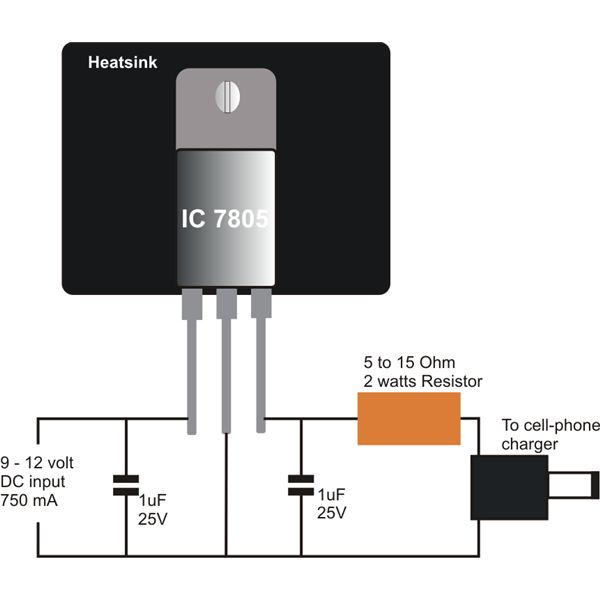
make 6v 4ah automatic battery charger

The battery charger circuit is designed to charge 6V 4.5 AH lead-acid batteries. The schematic is straightforward and utilizes only a few components. The IC LM317T serves as the core component of the circuit. It features an automatic charging mechanism, which ceases charging once the battery reaches full capacity. Such circuits are particularly beneficial for applications like solar garden lights and can also be employed in other devices, such as emergency LED lamps. A transformer rated at 230V AC to 9V / 500mA is recommended for use in this circuit.
The battery charger circuit utilizing the LM317T integrated circuit is an efficient and reliable solution for charging 6V lead-acid batteries with a capacity of 4.5 AH. The LM317T is a versatile voltage regulator that can be configured to provide a constant output voltage, making it ideal for battery charging applications. The circuit typically includes a few essential components: the LM317T, resistors for setting the output voltage, a diode for reverse polarity protection, and a capacitor for stability.
The operation of the circuit begins when the transformer converts the 230V AC mains voltage to a lower AC voltage of 9V. This AC voltage is then rectified by a bridge rectifier, which converts it to DC voltage suitable for charging the battery. The output from the rectifier is smoothed using a capacitor to reduce voltage ripple, ensuring a steady charging current.
The LM317T regulates the output voltage to the desired level for charging the lead-acid battery. It is essential to set the output voltage correctly to avoid overcharging, which can damage the battery. The automatic cutoff feature is achieved through a feedback mechanism that monitors the battery voltage. Once the battery reaches its full charge, the LM317T reduces the output current to prevent overcharging, thus extending the battery's lifespan.
In addition to solar garden lights, this battery charger circuit can be adapted for various applications, including emergency LED lamps and other low-power devices that require reliable charging of lead-acid batteries. The simplicity of the design and the availability of the components make it an attractive choice for hobbyists and professionals alike. Proper heat sinking for the LM317T and ensuring adequate ventilation in the circuit design are recommended to prevent overheating during operation.The battery charger circuit which is able to charge 6V 4. 5 AH lead acid batteries. The schematic is very simple and using only few components. IC LM317T is the heart of the circuit. The circuit is automatic so when the battery will become full charge it will stop charging. These type of circuits are very useful for solar garden light and can also be used in other circuits like emergency led lamp etc. Use transformer 230 AC to 9V / 500mA. 🔗 External reference
The battery charger circuit utilizing the LM317T integrated circuit is an efficient and reliable solution for charging 6V lead-acid batteries with a capacity of 4.5 AH. The LM317T is a versatile voltage regulator that can be configured to provide a constant output voltage, making it ideal for battery charging applications. The circuit typically includes a few essential components: the LM317T, resistors for setting the output voltage, a diode for reverse polarity protection, and a capacitor for stability.
The operation of the circuit begins when the transformer converts the 230V AC mains voltage to a lower AC voltage of 9V. This AC voltage is then rectified by a bridge rectifier, which converts it to DC voltage suitable for charging the battery. The output from the rectifier is smoothed using a capacitor to reduce voltage ripple, ensuring a steady charging current.
The LM317T regulates the output voltage to the desired level for charging the lead-acid battery. It is essential to set the output voltage correctly to avoid overcharging, which can damage the battery. The automatic cutoff feature is achieved through a feedback mechanism that monitors the battery voltage. Once the battery reaches its full charge, the LM317T reduces the output current to prevent overcharging, thus extending the battery's lifespan.
In addition to solar garden lights, this battery charger circuit can be adapted for various applications, including emergency LED lamps and other low-power devices that require reliable charging of lead-acid batteries. The simplicity of the design and the availability of the components make it an attractive choice for hobbyists and professionals alike. Proper heat sinking for the LM317T and ensuring adequate ventilation in the circuit design are recommended to prevent overheating during operation.The battery charger circuit which is able to charge 6V 4. 5 AH lead acid batteries. The schematic is very simple and using only few components. IC LM317T is the heart of the circuit. The circuit is automatic so when the battery will become full charge it will stop charging. These type of circuits are very useful for solar garden light and can also be used in other circuits like emergency led lamp etc. Use transformer 230 AC to 9V / 500mA. 🔗 External reference
